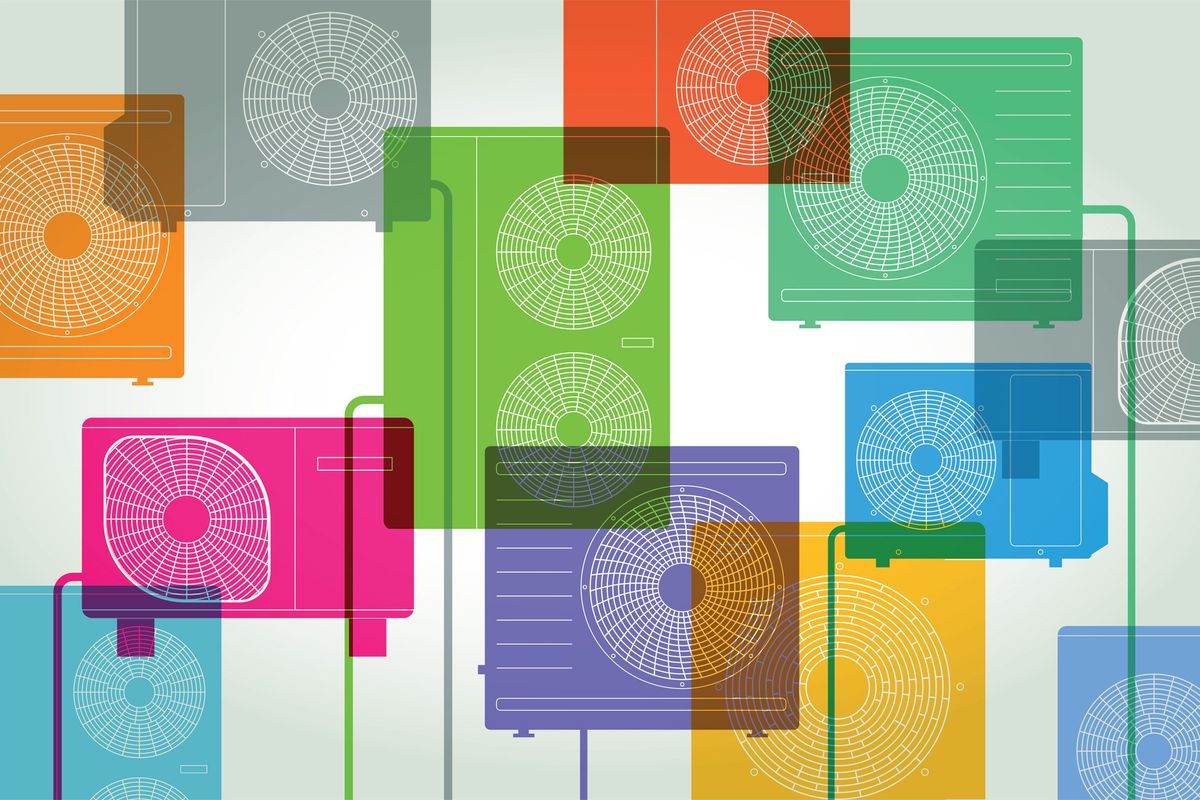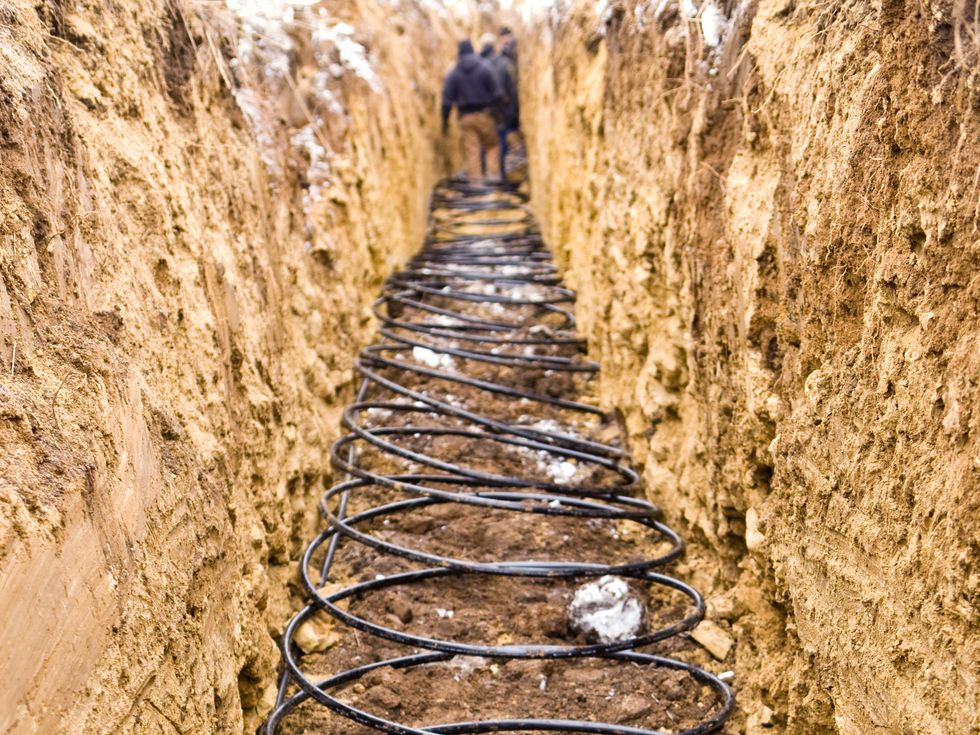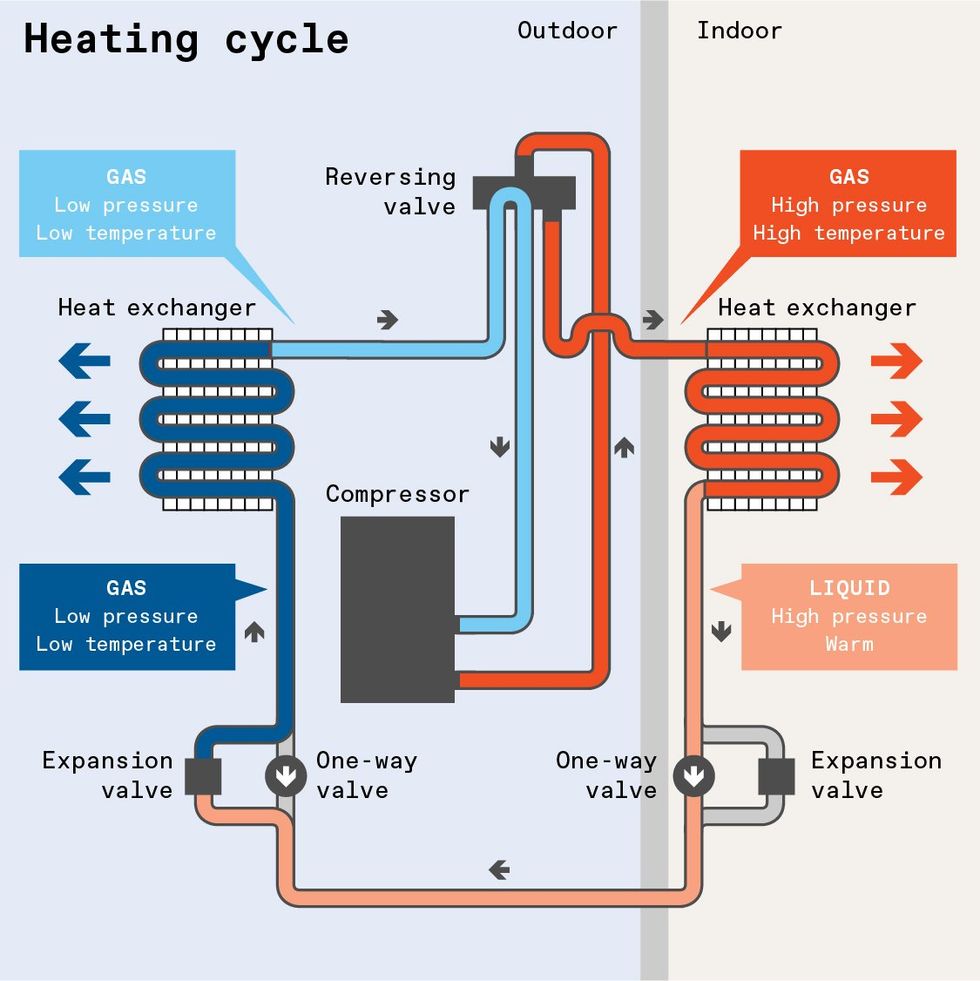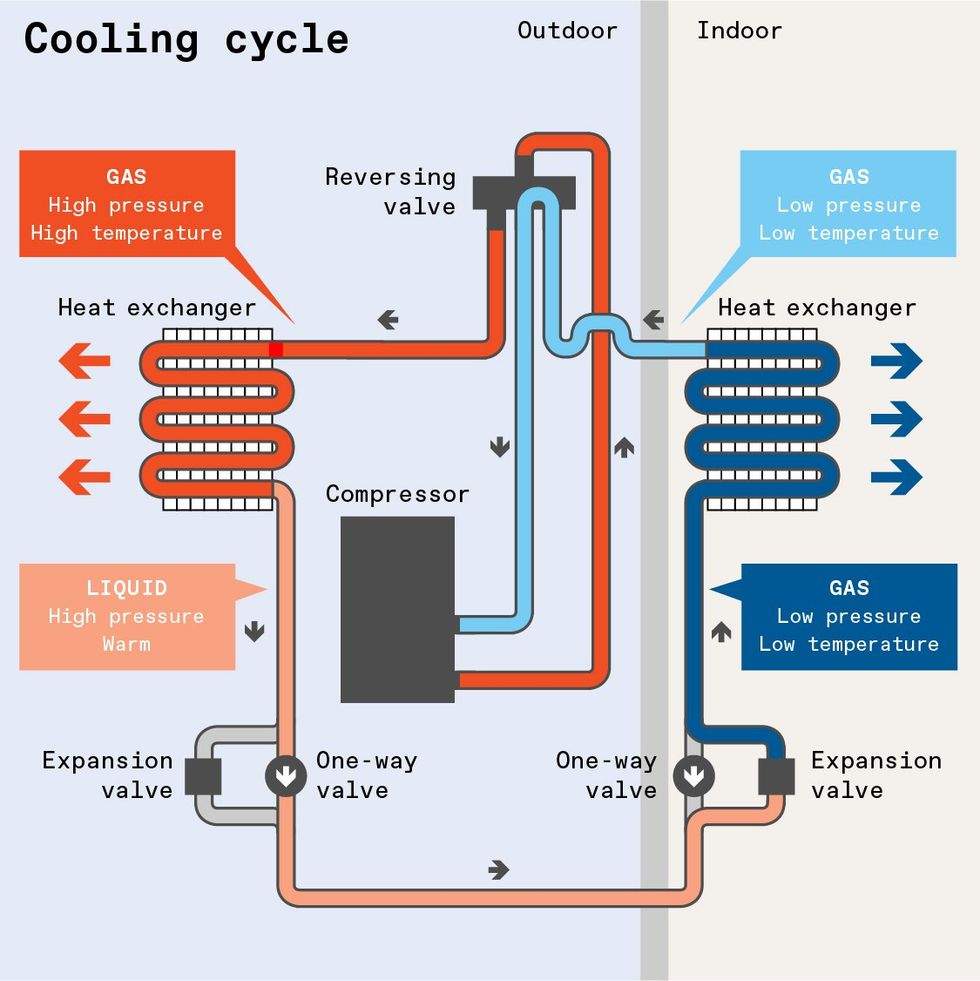What Is a Heat Pump?

Heat pumps are all the rage these days, particularly in Europe, where some countries are striving to ban the installation of fossil-fuel fired furnaces and boilers in favor of greener options, including energy-saving heat pumps. (Furnaces heat air and distribute it throughout houses using ducts, whereas boilers heat water to provide hot water or steam for heating.) And this year the U.S. government began offering tax incentives for the installation of heat pumps, which tend to cost more up front than traditional furnaces but are far more efficient in the long run. So maybe it's time to come up to speed on what a heat pump is and does.
What is the most common type of heat pump?Given all the recent buzz, you might be surprised to learn that you use heat pumps already-there's probably more than one in your home and another in your car. You just don't call them heat pumps: You use the terms refrigerator or air conditioner.
These machines are, in fact, heat pumps, meaning that they move heat from a place where it's relatively cold to a place where it's relatively hot. Heat flows on its own from hot to cold. But if you want to move it from cold to hot, you need to pump" it. The best analogy here is with water, which flows downhill on its own but needs to be pumped uphill.
 Workers install coiled tubing to carry the heat-exchange fluid for a ground-source heat pump.iStock
Workers install coiled tubing to carry the heat-exchange fluid for a ground-source heat pump.iStock
When you pump heat that's contained in a cold reservoir of some kind (air, water, whatever) to a warm one, the cold reservoir gets colder and the warm one gets warmer. And that's really all your refrigerator or air conditioner does-it moves heat from where it's not wanted to somewhere else, where you don't care that you're dumping a little extra heat.
How does a heat pump move heat from cold to hot?You might be asking yourself at this point: How is it even possible to pump heat from cold to hot? Put another way: How does a refrigerator work? The basic principle isn't difficult to understand, particularly with the help of a thought experiment.
Imagine you have a bottle of wine you want to chill, but you have no refrigerator. Maybe you're on a camping trip, and you don't have access to anything that's colder than your room-temperature wine. You do, though, have a bottle of equally tepid 176-proof vodka on hand.
The answer to this riddle, if you've not figured it out already, is to pour some vodka over the bottle of wine. The vodka is 88 percent alcohol, and as that alcohol evaporates, it will cool the wine a little. The principle at work here takes advantage of what's called the latent heat of vaporization. In a nutshell, evaporation of the alcohol takes away some heat energy from the wine bottle, cooling it slightly. After the vodka coating the surface of the wine bottle evaporates, rinse (with more vodka) and repeat, cooling the wine bottle a little more with each dousing.
The problem, of course, is that vodka is expensive, and you'll soon use it all up chilling the wine. Even if you replaced the vodka with cheaper rubbing alcohol, you'd soon be bemoaning the expense.
How can you make a practical chiller with a heat pump?The key insight that led to the heat pump came in the early 19th century, when various inventors, including Jacob Perkins, realized that they could cool something this way without squandering the volatile liquid they evaporated to achieve cooling. Instead of releasing those vapors into the atmosphere, they reckoned, you could collect them, condense them back into a liquid, and reuse that liquid as the coolant.
That's exactly what your refrigerator and air conditioners do. They evaporate a liquid refrigerant and use the chilly vapor to soak up heat from inside your icebox or car. They then compress that gas, which condenses back into liquid form. That liquid is now hotter than it started out, so some of the heat it holds flows easily (likely with the help of a fan) into the surrounding environment-be that the great outdoors or just the rest of your kitchen.
All that is to say: You are very familiar with heat pumps; it's just that you've been calling them air conditioners and refrigerators.
Let's now conduct another thought experiment. If you have a window air conditioner, you might even do this as an actual experiment. Install it backwards. That is, install it with the controls on the outside of your window. Do this on a somewhat cool and dry day. What happens?
As you'd expect, it blows cold air into your backyard, and it releases heat into your home. So it's still pumping heat, making your home more comfortable by warming it. Sure, it's making the air colder outside, but the effect will be vanishingly small once you get any distance away from the window.
You now have a heat pump warming your home. It might not be the best heat pump, but it will work. What's more, when summer rolls around, you can flip it around again and use it as an air conditioner.
Don't actually do this, of course. If you tried, it would no doubt fail the first time it rained and water got into the controls. Instead, go buy yourself a commercial air-source" heat pump, which will warm your home using the very same principle.
You are very familiar with heat pumps; it's just that you've been calling them air conditioners and refrigerators.
Some of these units have what is known as a reversing valve, which allows the same equipment to serve double duty: They can pump heat from outside to inside or from inside to outside, providing both heat and air-conditioning, as explained below.
A heat pump used for heating is basically the same as an air conditioner. Both contain piping that carries a volatile fluid around in a circuit, a compressor, and two heat exchangers, one indoors and one outdoors.
Some heat pumps take advantage of this similarity to function as both heaters and air conditioners. To do so, they use what's known as a reversing valve, which allows the volatile fluid in the piping to be sent in either direction. Each heat exchanger can then be used either to provide heat or to absorb heat.


Heat pumps are more efficient than electric heaters because they don't need to generate heat from electricity. The electricity a heat pump uses does create some heat along the way, but more important is that it pumps heat from outside into your home. The ratio of the heat released into your home to the energy sent into its electrically driven compressor is referred to as the coefficient of performance, or COP for short.
A simple electric space heater, which generates all the heat it provides from an electrically heated element, has a COP of 1. A heat pump, on the other hand, can have a COP that is an order of magnitude higher.
The COP for a heat pump is not a fixed value, though. It varies inversely with the difference in temperature between the two reservoirs between which heat is pumped. That is, if you are pumping heat from a not-so-very-cold reservoir into a not-so-very-hot building, the COP will be a large value, meaning that your heat pump is very efficient in how it uses electricity. But if you try to pump heat from a terribly cold reservoir into an already balmy building, the COP will have a lower value, meaning that efficiency suffers.
The result is what you'd intuitively expect: It's best to use as your outdoor reservoir of heat something that is as warm as you can find.
Air-source heat pumps, which use the outdoor air as that reservoir of heat, are the worst choice in this regard, because the outdoor air is very cold during winter heating season. Better would be a ground-source heat pump (also called a geothermal heat pump), because even in winter the ground at a modest depth remains pretty warm.
What's the best source of heat for a heat pump?The rub with ground-source heat pumps is that you need a way to access this buried reservoir of heat. If you have ample space around your home, you can dig trenches and bury a bunch of piping at a reasonable depth, say, a couple of meters down. You can then circulate a liquid (typically a combination of water and antifreeze) through these pipes to absorb heat from the ground. Or you can have deep boreholes drilled into the ground and have piping installed vertically into those holes. All that gets expensive, though.
Another tactic, available to the lucky few, is to extract heat from a nearby body of water, by submerging piping at some depth in that water. These are referred to as water-source heat pumps. Some heat pumps use more unusual strategies, whereby heat is extracted from the air leaving the building or from solar-heated water.
In very cold climates, it makes sense to install a ground-source heat pump if you possibly can. That's likely why most of the heat pumps in Sweden-a country with one of the highest numbers of heat pumps per capita-are of this variety. But even Sweden has a good share of air-source heat pumps, which belies the common assertion (at least in the United States) that heat pumps are only good for heating homes in mild climates.
So no matter where you are located, if you can afford the higher up-front costs, consider a heat pump over a traditional furnace or boiler next time you are faced with the decision about how to heat your home.